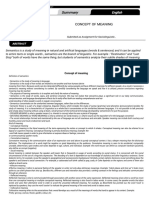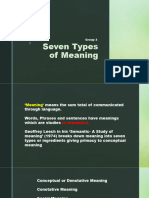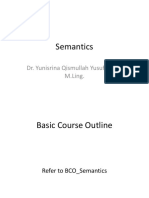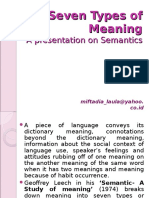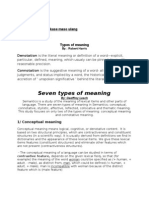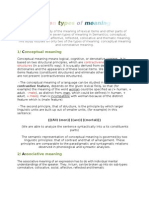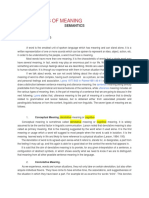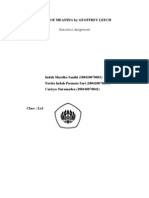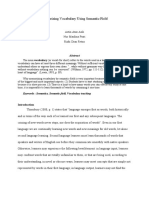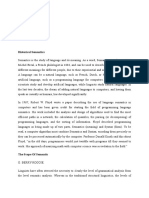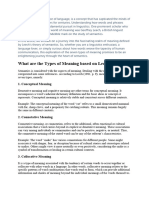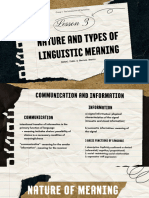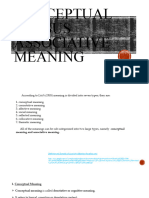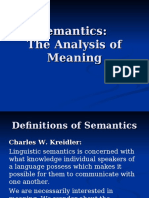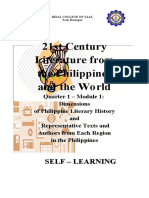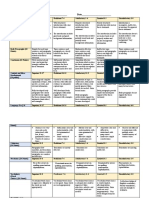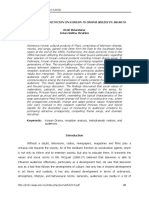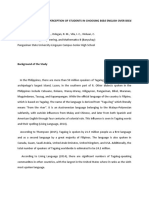0% found this document useful (0 votes)
31 views7 pagesSemantics
Semantics is the study of meaning in language, divided into lexical semantics (individual word meanings) and compositional semantics (how meanings combine). It explores various dimensions of meaning, including conceptual, associative, social, stylistic, affective, reflected, collocative, thematic meanings, and semantic roles. Additionally, it examines lexical relations such as synonymy, antonymy, and polysemy, as well as semantic ambiguity and meaning extension.
Uploaded by
adeliacarigCopyright
© © All Rights Reserved
We take content rights seriously. If you suspect this is your content, claim it here.
Available Formats
Download as DOCX, PDF, TXT or read online on Scribd
0% found this document useful (0 votes)
31 views7 pagesSemantics
Semantics is the study of meaning in language, divided into lexical semantics (individual word meanings) and compositional semantics (how meanings combine). It explores various dimensions of meaning, including conceptual, associative, social, stylistic, affective, reflected, collocative, thematic meanings, and semantic roles. Additionally, it examines lexical relations such as synonymy, antonymy, and polysemy, as well as semantic ambiguity and meaning extension.
Uploaded by
adeliacarigCopyright
© © All Rights Reserved
We take content rights seriously. If you suspect this is your content, claim it here.
Available Formats
Download as DOCX, PDF, TXT or read online on Scribd
/ 7

